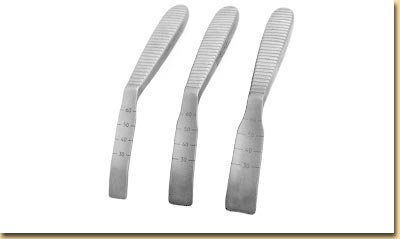Surgeon Spotlight #1 - Dr. Ralph Bingham Cloward and 44 operations in 4 days at Pearl Harbor- Memorial Day 2017 Edition
Howdy all and happy Memorial Day.
I'd like to kick off a series of posts I'll be making which will be highlighting historical figures in surgery and medicine. It being Memorial Day today, I'd like to share with you guys the story of the life of a prominent American surgeon - one who helped save a number of lives in Pearl Harbor...and he did it almost alone.
This is the story of Ralph Bingham Cloward, MD, (September 24, 1908, died November 13, 2000)....the man who was the only neurosurgeon in Hawaii during the attack on Pearl Harbor, December 7th, 1941. A man who performed more than 40 brain surgeries in only 4 days...

(Western Neurosurgical Society)
Born in Utah, he attended both the University of Hawaii and the University of Utah, then completed medical school in Utah and trained with the prominent Chicago neurosurgeon Dr. Percival Bailey. He then started practicing in Honolulu in 1938, becoming the first and only neurosurgeon on the islands until 1944. (Wow - what a cush beach job...wait...except you'd be on call at all times, better rethink this...)

(Encyclopedia Brittanica)
However, on December 7th, 1941, the fateful attack on Pearl Harbor occurred. Cloward rushed to the Tripler Hospital in Honolulu, where he found the wards full of soldiers and bystanders injured in the attack - many of them having suffered acute skull fractures from shrapnel. Cloward later reported in the Journal of the American Medical Association that a great many of these patients had shrapel buried deep within their brain, lacerating cortical vessels and shredding brain substance. Over the course of the next four days, he would perform 44 craniotomies - 11 operations a day.
To put that in perspective - most American neurosurgeons now perform at most 3-4 craniotomies in a singular operating day. And that's with the benefit of high-speed operating drills, electrocautery, and a number of time-saving innovations. I can't imagine what it would be like to operate that much for that long - or how my fingers would feel from tying so many knots or probing so many wounds. The physical exhaustion would be devastating...and that says nothing about the mental exhaustion one would go through, and the sheer shock of the entirety of the event.
Thanks to his efforts, many of those patients he helped would get a chance at survival and recovery. Time magazine credited him with saving the "lives and wits" of countless soldiers and Americans during the tragic event. But despite all that, he was to get no rest. Given the security of the situation, automobiles at that point had their headlights painted over except for a thin strip. Tired after four days of operating, the low light was not sufficient to drive by and his car crashed into an unseen ditch - thankfully, he was not injured seriously.
He would continue practicing neurosurgery in Honolulu for the rest of his life. Not only a hero of Pearl Harbor, he was one of the leading innovators of spinal surgery. He developed an approach to the spinal column from the anterior neck (The Cloward, or the anterior cervical discectomy and fusion), which is one of the most common spinal procedures performed today, as -well-= as a technique for fusing the lumbar spine from the back, which is probably the -other- most commonly performed spinal fusion operation. He developed over 100 surgical instruments, most key of which is the Cloward retractor, used to protect the carotid artery and esophagus in surgery.

(Cloward Retractors - image from Cloward.com)
Holding Cloward retractors (which is what the first assistant does in spinal surgery) is hard. It hurts your hands and fingers, and can be totally exhausting to keep precise tension in exactly the right spot.
But knowing the example set by this American hero, well, I think I'll always be able to find the strength to hold on a little longer.
Questions / Comments?
Please feel to resteem and upvote - Dr. Cloward's history has fascinated me for some time, and he's truly an unsung American hero.
(Sources - Time Magazine, the AANS spine section, JAMA, and Wikipedia)
MNIV
Congratulations @my-name-in-vein! You have completed some achievement on Steemit and have been rewarded with new badge(s) :
Click on any badge to view your own Board of Honnor on SteemitBoard.
For more information about SteemitBoard, click here
If you no longer want to receive notifications, reply to this comment with the word
STOPIf you want to support the SteemitBoard project, your upvote for this notification is welcome!